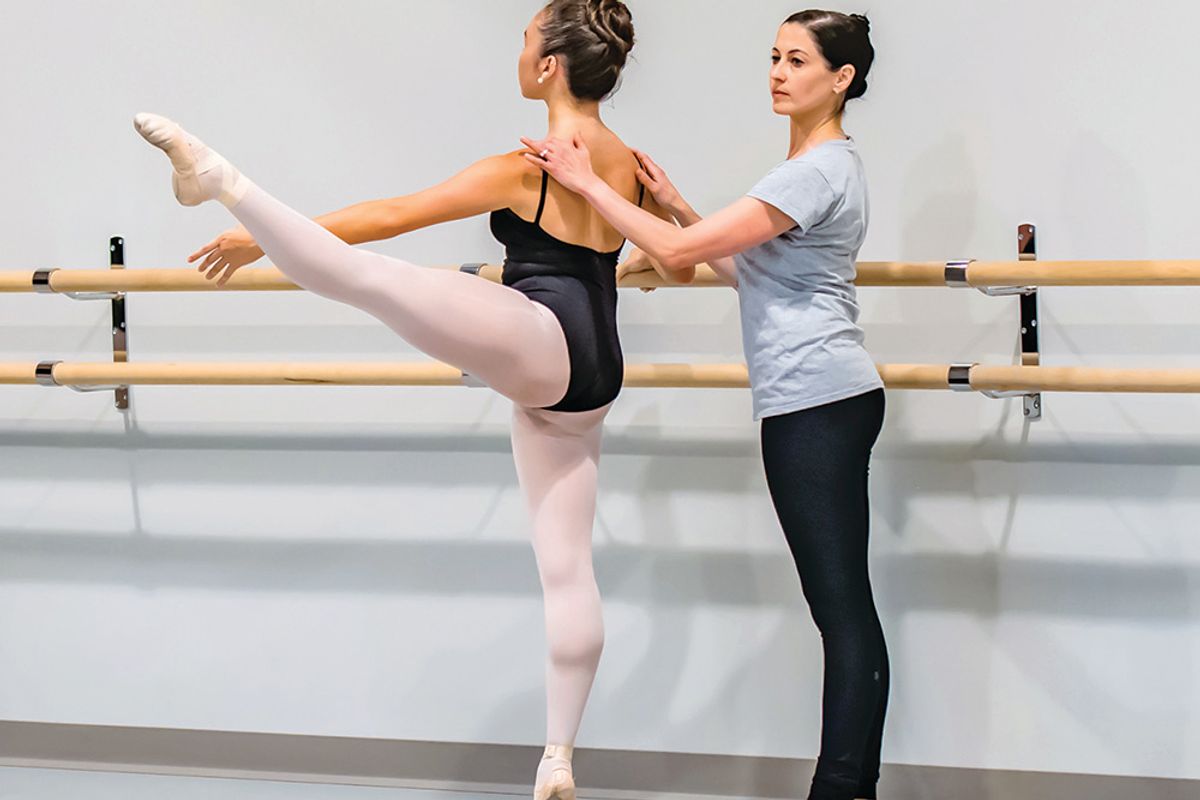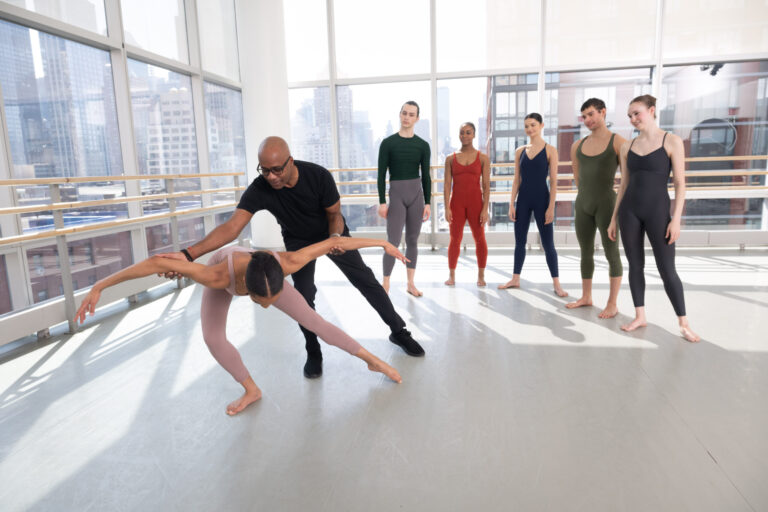
At the LINES Ballet Dance Center in San Francisco, faculty member Erik Wagner leads his class through an adagio combination in center. He encourages dancers to root their standing legs, using imagery of a seed germinating, so that they feel more grounded. “Our studios are on the fifth floor, so I’ll often tell them to push down to Market Street,” says Wagner. “They know that they should push their energy down to the street level.” By using this oppositional force, he says, dancers can lengthen their bodies to create any desired shape.
A slow and fluid adagio can captivate an audience. When done well, it demonstrates tremendous strength and control, while allowing dancers quiet and subtle moments of expression. But adagio work can be challenging and nerve-racking even for the most seasoned professionals. Using imagery like Wagner’s idea of the root system and other simple techniques will give students the tools they need to achieve freedom in their adagio. They might even grow to love it.
Hold With Placement
To create and sustain adagio movements, dancers need proper alignment and a strong core. At the Pennsylvania Ballet Academy in Camp Hill, co-artistic director Vanessa Zahorian starts young beginner dancers with an eight-count développé in each direction first facing the barre at 45 degrees, and then with one hand. “With the lower levels, you need to go slowly so they hold each position and see what it feels like,” she says. “The longer they hold it, the easier it gets. Then they can start to move through the positions and add more complicated steps.”
Zahorian emphasizes the need for good placement and talks to students about the importance of using their inner thighs and backs of the legs, mentioning the associated benefits of Gyrotonic. “They need to lengthen their extension from the hip socket and keep very square hips, so that everything rotates with turnout and spirals outward. The energy never stops.”
At Ballet West, academy director Peter LeBreton Merz might give a 64-count adagio—sometimes 128 counts—to give dancers ample time to use their muscles. “I like a long adagio,” he says. “People try to power too much and not use enough technique. When dancers are a little more tired, they are forced to think more technically and support the movements better.”
Find Balance
The key to a solid adagio? “It’s all about the balance,” says Merz. “In ballet, the secret ingredient is to improve balance, because it affects so many things.” Jumps are higher when the force is focused up in one direction. Turning, of course, is also easier when dancers are “on their leg.” “Adagio helps you focus on those aspects and maintains balance through big, unsupported movements. We use it to prepare for everything else in center,” he says. Merz encourages teachers to be very specific about port de bras and épaulement, since a slight difference in head and shoulder placement can affect a dancer’s sense of balance as well.
Standing steadily on one foot can be especially difficult for dancers in pointe shoes. The shank may feel like a short and narrow platform that undermines a dancer’s ability to establish contact with the floor. Merz tells dancers to imagine that their first and fifth metatarsals are reaching away from each other, reaching around the shank and onto the marley. For all dancers, he recommends not resting on the toes or heels, but making sure that the tailbone is centered over the ball of the foot. “Make the leg as long as possible and pull the pelvis up off the femur,” he says. “It’s not static or gripping, but a dynamic action.”
Use Expression
Whether dancing alone or with a partner, an adagio provides the luxury of time—an organic opportunity for students to express themselves. “I like to talk about subtlety and mystery,” says Wagner. “Dancers can create allure that will inspire an observer to lean in. I tell students not to ‘give it away’ in the preparation.” In an effort to be more expansive, students might want to initiate a step with the head or shoulders. But Wagner warns against it. “There shouldn’t be a movement before the movement. It’s about using artistic volume control so it’s not all on one level. Less is more!”
When students are tense, their adagio will be less successful. Zahorian recommends that these dancers remember to breathe through each movement. “They shouldn’t inhale as they piqué, but exhale and release the energy,” she says. If they are struggling to get their legs up, ask them to go back to tendu on the floor and revisit the idea of lifting to hip height with length. Or have them stand at the barre and try again there. “Most important, I like to emphasize the rhythm so that their movement isn’t static. Dancing an adagio to the music can take them to another place.”



